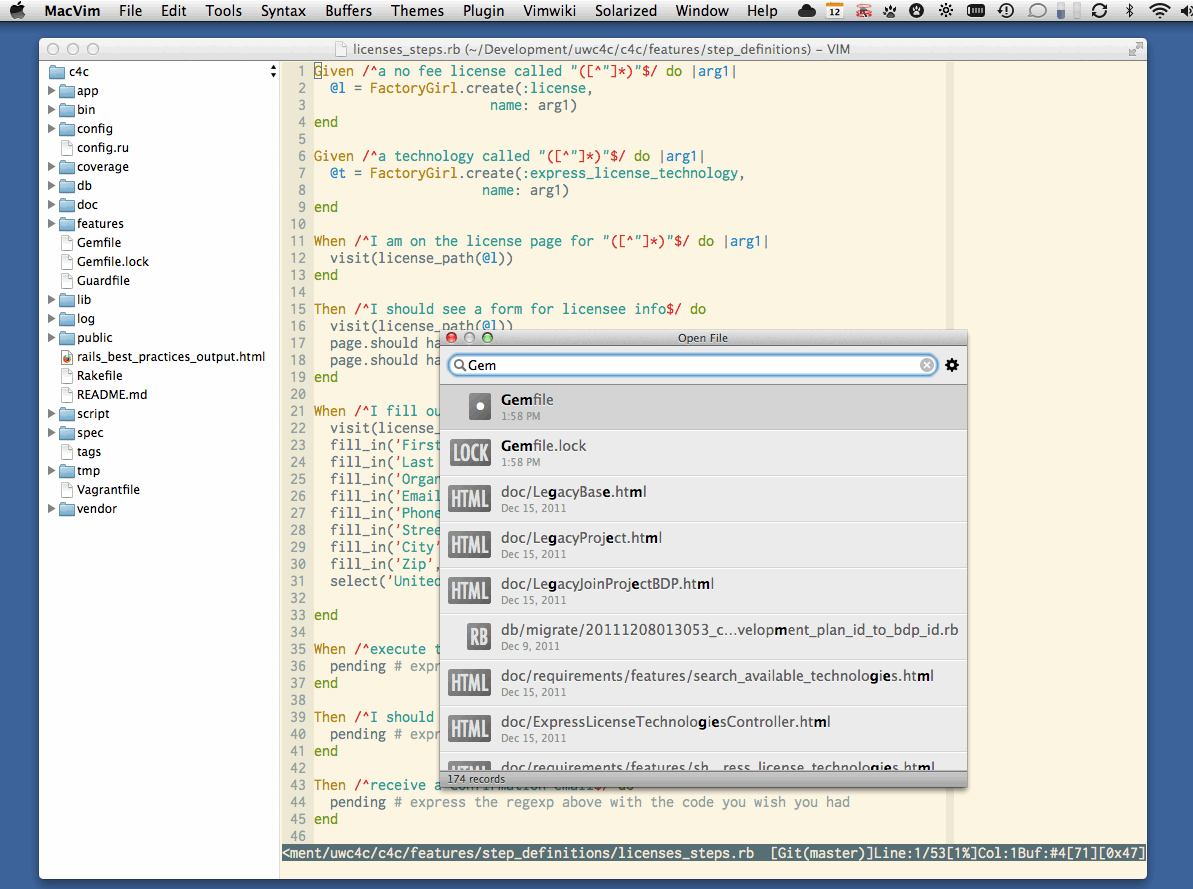


#MACVIM GVIMR MAC#
#MACVIM GVIMR HOW TO#
The second part describes how to build for MacVim.

Vi offers two insert modes (command, insert) and Vim offers seven insert modes (normal, visual, select, insert, command-line, ex, terminal-job).I’ve compiled a list of essential Vim commands that I use every day. Vi has no mouse support but does offer full-screen editing mode. The differences between them primarily consist of their default keybindings (Vim uses hjkl instead of Vi’s arrow keys) as well as some additions including extra commands and extended functions within Vimscript extension files such as plugin scripts. Differences Between Vi and VimĪ common misconception about Vi and Vim is that they are completely different editors when in fact both are just variants of each other.
#MACVIM GVIMR SOFTWARE#
Vim remains free software distributed under a license which allows anyone to use the program without any restrictions whatsoever so long as they’re not selling it commercially. It has grown very popular over time due to its prevalence on Linux distributions like Ubuntu or Debian. It also doesn’t use any GUI elements but includes fonts with advanced color schemes and handy visual aids such as line numbers. Vim offers an expanded set of capabilities such as syntax highlighting, spell checking, line numbering, and file backups. Unlike Vi, there are many different variants available – such as GVim and MacVim – so users can choose whichever works best on their operating system. It was originally developed by Bram Moolenaar in 1991 with the help of others who assisted him on various ports for different operating systems. It is an extended version of Vi that includes more functionality such as syntax highlighting and the ability to execute commands from within text editors, among other features.

Vi has a very minimalistic UI, where all commands are entered through keyboard shortcuts, but it lacks many of the features that most modern text editors have (such as a spell checker). It’s often considered an “old-school” tool for developers who need to edit files without using a mouse or graphical user interface (GUI). It was created by Bill Joy in 1976 for UNIX systems as a visual editor. Vi is an acronym for “visual editor,” while Vim stands for “vi improved.” In this blog post, we’ll take a closer look at the differences between these two popular editors. Vi and Vim are both text editors that can be used to edit files on a computer.


 0 kommentar(er)
0 kommentar(er)
